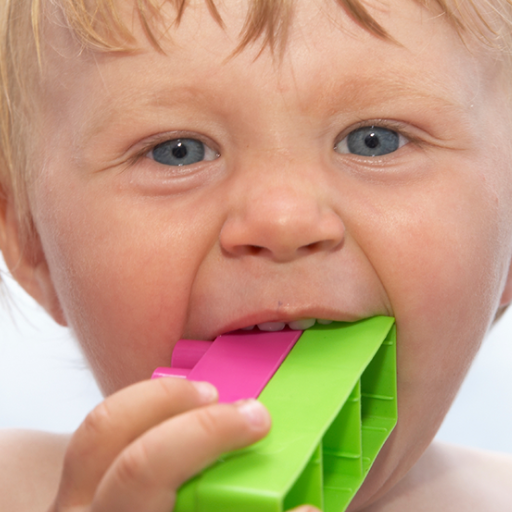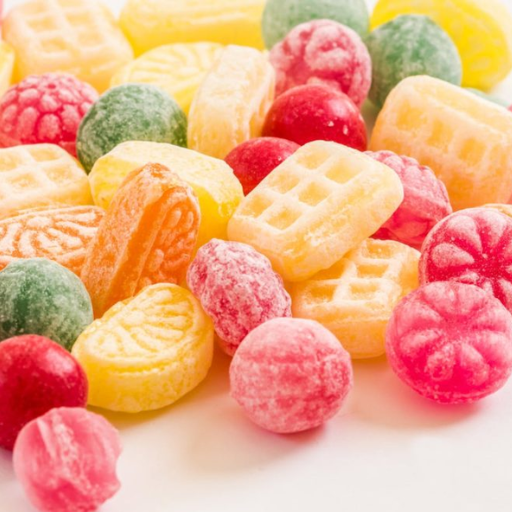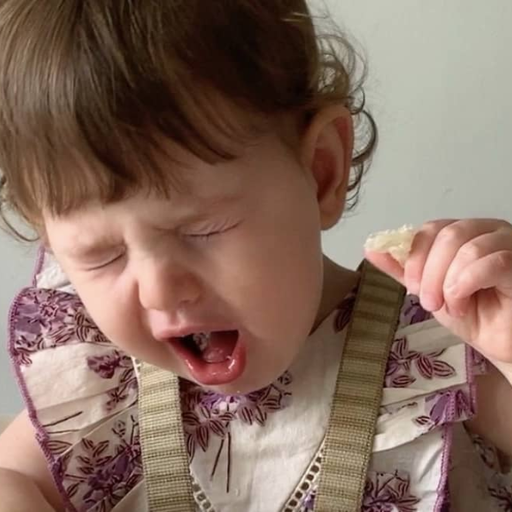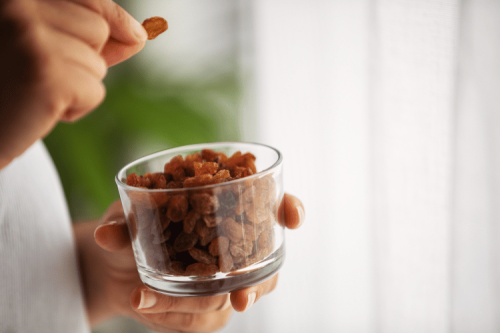
The safety of toddlers is generally a major concern for parents and guardians, especially during meal and snack times. This article focuses on the issue of choking, which is one of the most common causes of injury to a child. As toddlers tend to put everything in their mouths as they start to walk, The need to know the possible risks that common foods and objects pose is extremely important. This guide will prepare readers with an authoritative overview of choking hazards and provide them with practical tools to effectively mitigate these hazards. Based on expert opinions and statistics, our style approach diagrams not only the typical mouth - or finger-choking risks but explains how they may be avoided as well, favoring the innovative impact on toddlers’ snacking habits.
 According to an analysis of the risks faced by infants, it should be stressed that the risk of choking on various foods and other small objects is particularly high during the early stages of child development as they are characterized by smaller airways and poor chewing strength. Choking from food items has been reported to include quires like whole grapes, hot dogs, nuts, raw carrots, popcorn, and again large chunks of meat or large chunks of cheese. In addition, non-food items like small toys, even coins and marbles, can also be seen as choking hazards. Such things have similarities in factors such as size and shape, which can serve as a hindrance to small children and go into their windpipe during an accident. Successful preventive measures demand alterations in the shape and texture of foods, supervision during mealtimes, and furniture arrangement, whereby no items other than food items are within reach of toddlers.
According to an analysis of the risks faced by infants, it should be stressed that the risk of choking on various foods and other small objects is particularly high during the early stages of child development as they are characterized by smaller airways and poor chewing strength. Choking from food items has been reported to include quires like whole grapes, hot dogs, nuts, raw carrots, popcorn, and again large chunks of meat or large chunks of cheese. In addition, non-food items like small toys, even coins and marbles, can also be seen as choking hazards. Such things have similarities in factors such as size and shape, which can serve as a hindrance to small children and go into their windpipe during an accident. Successful preventive measures demand alterations in the shape and texture of foods, supervision during mealtimes, and furniture arrangement, whereby no items other than food items are within reach of toddlers.
 The prevention of choking in toddlers, as one of the industry experts puts it, has to be threefold concerning preparation, supervision, and education. First, cut all the food, especially round and hard, such as carrots or grapes, into smaller pieces of bite-size…. Secondly, perfect supervision ought to be enforced on toddlers whenever they are having their meals to instantly resolve any problems that the toddlers may encounter. Lastly, caregivers should also be trained on proper feeding techniques, such as slow eating and what things to avoid, including common choking hazards. By taking the above measures, the chances of any choking episodes can be dramatically reduced allowing children to be able to eat safely.
The prevention of choking in toddlers, as one of the industry experts puts it, has to be threefold concerning preparation, supervision, and education. First, cut all the food, especially round and hard, such as carrots or grapes, into smaller pieces of bite-size…. Secondly, perfect supervision ought to be enforced on toddlers whenever they are having their meals to instantly resolve any problems that the toddlers may encounter. Lastly, caregivers should also be trained on proper feeding techniques, such as slow eating and what things to avoid, including common choking hazards. By taking the above measures, the chances of any choking episodes can be dramatically reduced allowing children to be able to eat safely.
 Caregivers in particular, should be aware, that toddlers should not be offered foods that present choking hazards in the eating of toddlers. Foods to avoid include whole grapes, nuts, popcorn, raw carrots, hard candies, marshmallows, and huge pieces of meat or cheese. The size, shape, and texture of these items may plug a toddler’s far smaller airways. Instead, if cutting these potentially hazardous foods into smaller pieces is not feasible, they should be of a texture and size that children are able to chew and swallow without any hazards. While kids are having their meal or snack, they must always be watched so that in case of any surprises, help can be immediate.
Caregivers in particular, should be aware, that toddlers should not be offered foods that present choking hazards in the eating of toddlers. Foods to avoid include whole grapes, nuts, popcorn, raw carrots, hard candies, marshmallows, and huge pieces of meat or cheese. The size, shape, and texture of these items may plug a toddler’s far smaller airways. Instead, if cutting these potentially hazardous foods into smaller pieces is not feasible, they should be of a texture and size that children are able to chew and swallow without any hazards. While kids are having their meal or snack, they must always be watched so that in case of any surprises, help can be immediate.
 Should your toddler start to asphyxiate, kindly note the following steps to secure their safety:
Should your toddler start to asphyxiate, kindly note the following steps to secure their safety:
What Are the Most Common Choking Hazards for Toddlers?
 According to an analysis of the risks faced by infants, it should be stressed that the risk of choking on various foods and other small objects is particularly high during the early stages of child development as they are characterized by smaller airways and poor chewing strength. Choking from food items has been reported to include quires like whole grapes, hot dogs, nuts, raw carrots, popcorn, and again large chunks of meat or large chunks of cheese. In addition, non-food items like small toys, even coins and marbles, can also be seen as choking hazards. Such things have similarities in factors such as size and shape, which can serve as a hindrance to small children and go into their windpipe during an accident. Successful preventive measures demand alterations in the shape and texture of foods, supervision during mealtimes, and furniture arrangement, whereby no items other than food items are within reach of toddlers.
According to an analysis of the risks faced by infants, it should be stressed that the risk of choking on various foods and other small objects is particularly high during the early stages of child development as they are characterized by smaller airways and poor chewing strength. Choking from food items has been reported to include quires like whole grapes, hot dogs, nuts, raw carrots, popcorn, and again large chunks of meat or large chunks of cheese. In addition, non-food items like small toys, even coins and marbles, can also be seen as choking hazards. Such things have similarities in factors such as size and shape, which can serve as a hindrance to small children and go into their windpipe during an accident. Successful preventive measures demand alterations in the shape and texture of foods, supervision during mealtimes, and furniture arrangement, whereby no items other than food items are within reach of toddlers.
Identifying Choking Hazards in Everyday Foods
In my practice as a consultant, a lot of parents have contacted me regarding choking hazards posed by choking foods, including common items that are present in any household. In my observations, most offenders are spherical or cylindrical shapes, smooth surfaced, or those that are more pliant than chewy and thus may not be well chewed by toddlers. A classic example is grapes, which, for risk of choking, must always be cut into more palatable sinks. The same is true of carrots when they are prepared at high temperatures, producing soft flesh or grated and included in salads. Children, who are the target market of hot dogs and sausages, should always be sold after cutting them up in length before serving them whole. These are very small changes, but reminders of them to caregivers and constant revision of shapes and sizes of foods given to children can make a lot of difference in providing a safer feeding environment to toddlers.Foods That Choke: From Fruit Snacks to Popcorn
I know that explaining the choking hazards of some foods may help the caregivers in fending off the risks. So let us dissect this matter in detail.- Size and Shape: Foods that are whole, hard or satisfyingly compress well, are more likely to become lodged in a child's airway. For example, whole grapes and cherry tomatoes fall into this category. Slicing up such items into small pieces alters their shape and size hence making it secure.
- Texture: Slippery or sticky textures make the act of chewing or the swallowing process easier said than done. These include fruit snacks and marshmallows, or even large chunks of peanut butter that can frisbee all the way to the back of the throat. As a rule of thumb, when snacking, choose those that are less sticky and dissolve more easily.
- Compression: Here, lower prevalence indicates less risk, for a food that is squashed down would be able to take the outline of the throat. Here, popcorn kernels and hunk meat are substantial threats. Instead of allowing them to eat on their own, supervise toddlers closely and tell them to take small bites so as not to risk over eating food that can squish very easily.
- Density: For toddlers, dense foods provide resistance and matrix structures that are hard to bite into as well as chew successfully. Raw carrots and apples are a few instances. If possible, try slicing or even cooking these before offering to make it good and softer.
Understanding Potential Choking Risks in Toddlers
Breaking down complex information is essential for toddlers’ choking hazards, Let us examine the unnecessary parameters one by one:- Size and Shape: Foods like round and whole grapes or cherry tomatoes have a higher potential of blocking a toddler’s airway. Whole grapes and cherry tomatoes, for instance, should always be cut into smaller pieces to make them safer in the first place. This alteration in shape and size reduces the odds of these choking hazards getting lodged in a child’s throat.
- Texture: The texture of a certain food can also dictate the risk at which toddlers can consume it safely. Foods that are slippery, overly sticky, or globular are taking large amounts of peanut butter, like fruit snacks, which can pose a danger in the first place because they are more difficult to swallow. Choose snacks that contain lower chances of being bulky so that chances of the child choking are uneasy.
- Compression: Foods like popcorn or dense chunks of meat which can compress or squash in the throat shape can be dangerous. Making sure to cut food into smaller bites and avoiding especially compressible items may also assist to keep choking at bay.
- Density: compressed foods like raw carrots and apples are quite dense and can be difficult for toddlers to chew properly. The solution can be as simple as cutting these items up or cooking them to soften which not only makes them easy to chew but also to swallow.
How Can I Prevent Choking in My Toddler?
 The prevention of choking in toddlers, as one of the industry experts puts it, has to be threefold concerning preparation, supervision, and education. First, cut all the food, especially round and hard, such as carrots or grapes, into smaller pieces of bite-size…. Secondly, perfect supervision ought to be enforced on toddlers whenever they are having their meals to instantly resolve any problems that the toddlers may encounter. Lastly, caregivers should also be trained on proper feeding techniques, such as slow eating and what things to avoid, including common choking hazards. By taking the above measures, the chances of any choking episodes can be dramatically reduced allowing children to be able to eat safely.
The prevention of choking in toddlers, as one of the industry experts puts it, has to be threefold concerning preparation, supervision, and education. First, cut all the food, especially round and hard, such as carrots or grapes, into smaller pieces of bite-size…. Secondly, perfect supervision ought to be enforced on toddlers whenever they are having their meals to instantly resolve any problems that the toddlers may encounter. Lastly, caregivers should also be trained on proper feeding techniques, such as slow eating and what things to avoid, including common choking hazards. By taking the above measures, the chances of any choking episodes can be dramatically reduced allowing children to be able to eat safely.
Why Supervision Is Key During Snack Time
I would like to stress the importance of supervision when toddlers are in the eating area, especially during snack time. This is mainly due to the unpredictability of young children; as children, they are inquisitive and have a tendency to place foreign objects or things in their mouths. Janet and Christopher spoke to Rev. Ed Klinker about factors that should be taken into account:- Awareness of Choking Hazards: Children of this age do often explore both their environment but mostly their mouths when they are not fully aware of dangers. We can prevent these situations as long as we pay close attention and allow to consume only those foods that have been proven to be safe for the children’s age constraints.
- Immediate Response: In the case of a child or adult choking while being supervised by somebody else, the presence of the person makes it easier to respond swiftly for example initiation of first aid measures or contacting emergency services within a short span of time.
- Encouraging Good Eating Practices:At the same time supervision of the child implies instructing them on the safe eating practices. For example, kids should learn to sit while eating, learn to chew their food well, avoid putting too much food in their mouth at a time and the likes. All these practices contribute towards the reduction of the risks.
- Reinforcing Positive Behaviors: Since there is constant supervision, safe eating behaviors can be firmly encouraged among young eaters and this will also help in further promoting focus and hard work among them. Connecting with and watching the children at a time they are eating snacks can help in the infusion of good habits which in this case can be carried to the grave.
Techniques to Teach Toddlers to Chew Properly
A significant contribution to the work is the need to bring the teaching process of chewing toddlers correctly to the simplest discouraging methods, which are easy to grasp and use by both young children and their caretakers. Below are some important techniques discussed in detail:- Modeling and Demonstration: Children learn by observing adults, so eating together and modeling appropriate chewing practices can be very beneficial. Explain to the child how to enjoy chews without haste, suggesting a bite-sliding-a-bite approach.
- Use of Suitable Foods: Use foods that will not be difficult for toddlers to bite but will make use of some effort: soft fruits chopped into small pieces, or steamed vegetables. These types of food help children practice chewing and are not too much for them.
- Encouragement and Patience: Be sure to motivate your toddler and commend their attempts at chewing correctly. Have the patience, as every child is an individual who will take time to learn, and encouragement helps them in having confidence.
- Interactive Learning: However, chewing practice should not be tedious – it should be romanticized. Come up with games or rhymes that will entertain parents and toddlers and help them learn the correct way of chewing.
- Consistent Practice: Regular practice of these methods throughout meals has the added advantage of toddlers acquiring the chewer's skills with time. They must be repetitive and consistently reinforced until the desired behavior becomes automatic.
What Are the Signs of Choking in a Toddler?
Your background in the industry makes it easier to appreciate that being an adult requires being cautious and, if possible, avoiding a situation where there is a risk of choking, especially for a toddler. Children who are choking will display certain behaviors such as crying, being able to speak, or even breathing normally, which is the most common response in a state of choking. A look of extreme distress is common in a child who is attempting to breathe and will normally be seen with their hands on the throat. Other signs are bluish skin discoloration (cyanosis), poor or no cough reflexes, or even the child's loss of consciousness if the obstruction of breathing has been prolonged. Once these signs are noticed, prompt action will be needed – either the Heimlich maneuver is performed, or emergency services are requested. Either is vital to the removal of any blockage.Recognizing Signs of Choking and Immediate Actions to Take
- Look for Inability to Make Sounds: A toddler that is choking is usually unable to speak or cry. This is a very quiet and clear indicator of deep trouble.
- Observe Breathing Difficulties: A child who is having difficulty breathing is most likely to display distress cues such as gasping or wheezing sounds.
- Notice Changes in Skin Color: The presence of bluish tint in the skin or lips also known as cyanosis shows the child is not receiving enough supply of oxygen which is a serious danger sign.
- Watch for Clutching at the Throat: When toddlers are unable to breathe, they tend to go for their throat in most cases due to blockages.
- Pay Attention to Ineffective Coughing: If the child is weakly pronouncing the sounds or is not able to cough out loud, it indicates that the passage of air is almost blocked.
- Identify Loss of Consciousness: Persistent choking in the absence of any intervention can lead to the worsening of the child, loss of consciousness, and worse, so the child is at a mentionable risk.
When to Seek Help: Visiting a Children’s Hospital
In the best interests of the young ones, it is of significance to note, how many times there is a need to take a trip to a children's hospital, especially in the event of choking occurrences. To assist in making the right judgment in regards to seeking medical care from a professional, these are some simple suggestions:- Observing Severe Signs of Choking: Child does not make any sound, does not cry or can’t even breathe. Such a situation demands medical assistance immediately. First aid procedures must be administered but further care and examination of the injury is very important and can never be overemphasized.
- Recurrent or Severe Respiratory Distress: If the child who has experienced this affliction before, coughs up stridor later even when the upper respiratory passageway is unclogged, the child should be 檢查 by medical professionals. This allows for ascertaining that no remnants of respiratory deformities remain after the onset of the ailment itself.
- Ongoing Blue Skin Tint (Cyanosis): In children the blue lips and skin is very dangerous and is an indicator of heart asphyxiation. If this is the case even when other indicators have ceased, immediate steps must be taken to further assess the condition of the child and the extent of damage they suffered.
- Loss of Consciousness:In events where they experience choking, the child is rendered unconscious for a period of time. Once unconsciousness has been experienced, there can be a number of adverse events/things that a doctor needs to look out for or be made aware of.
- Difficulty Swallowing Post-Incident: Swallowing even after eating is a sign that the child might have been injured in some way. It might also mean that internal damage occurred and did not show itself outwardly. It would be wise for a parent to have the child seen by a medical professional immediately.
Which Foods Should Be Avoided to Reduce Choking Hazards?
 Caregivers in particular, should be aware, that toddlers should not be offered foods that present choking hazards in the eating of toddlers. Foods to avoid include whole grapes, nuts, popcorn, raw carrots, hard candies, marshmallows, and huge pieces of meat or cheese. The size, shape, and texture of these items may plug a toddler’s far smaller airways. Instead, if cutting these potentially hazardous foods into smaller pieces is not feasible, they should be of a texture and size that children are able to chew and swallow without any hazards. While kids are having their meal or snack, they must always be watched so that in case of any surprises, help can be immediate.
Caregivers in particular, should be aware, that toddlers should not be offered foods that present choking hazards in the eating of toddlers. Foods to avoid include whole grapes, nuts, popcorn, raw carrots, hard candies, marshmallows, and huge pieces of meat or cheese. The size, shape, and texture of these items may plug a toddler’s far smaller airways. Instead, if cutting these potentially hazardous foods into smaller pieces is not feasible, they should be of a texture and size that children are able to chew and swallow without any hazards. While kids are having their meal or snack, they must always be watched so that in case of any surprises, help can be immediate.
The Danger of Hard Candies, Nut Butter, and Gummy Treats
I cannot help but stress how toddlers become at risk of choking on nut butter, gummie treats, and, of course, hard candies. Hard candies are quite large in shape and are also quite stiff as well. Hence, it is very common for a young child to get a hard candy stuck in their throat. Nut butter, unlike might other items, creates a different type of issue since it is drownable and can be in a paste-like form and thus can block the throat. Gummies pose a severe choking hazard as they are both bite-resistant and very sticky. These items should never be offered to toddlers, and all caregivers are responsible for ensuring it does not happen. (Always supervise meal and snack times as a precaution to ensure such events do not occur).Why Small Pieces and Hard Foods Pose a Risk for Choking
I recognize that both hard foods and small pieces increase the risk of choking in toddlers aged between 1-3 years and above. Huge chunks of food, even though they appear smaller than they actually are, can get stuck into the windpipe in the event that they are not chewed. In this age group, physical oral development is still incomplete as far as oral motor development is concerned, which leads to the case where the children's lumps are swallowed without adequate amounts of chewing. This chewing of lumps gets more complicated when most of the lumps consist of hard foods that need extensive chewing before swallowing. These two characteristics, toughness and size, when thought of alongside the integrating physiology of a toddler who is still learning how to chew, make things dangerous and make obstruction of the airways possible. In the event that such risks do arise, caregivers should keep the infants in focus whilst feeding them, cut the food into tiny pieces to encourage safe consumption, and also teach them the importance of chewing properly.How to Wean Your Little One Safely
Allow me to assist you in this delicate task of weaning your infant. Weaning, in a broader sense, is the process where an infant is gradually fed solid food and no longer reliant on breast milk or baby formula. Some important rules that I would like to impart to my audiences are as follows:- Start Gradually: If your child is developmentally prepared, solids should be introduced around six to eight months of age. Look for signs like the child being able to sit with only minimal support or showing interest in your food.
- Choose Age-Appropriate Foods: Avoid salt on the food as well; it has no nutritional content for infants. Single-ingredient baby food purees are good starters as well; these can be iron-fortified cereals or pureed fruits or vegetables.
- Monitor Allergies: New foods should be introduced one at a time, and the next one should be withheld for a few days. This is useful for determining any allergies or sensitivities that may be present at a young age.
- Consistency and Texture:First feed children smooth purees, and then gradually mash food as the child learns to chew and can handle larger pieces, then introduce small pieces of soft finger foods.
- Encourage Self-Feeding: Let the baby try self-feeding with finger foods when the baby shows better ability. This can increase independence and motor development in the child.
- Ensure Nutritional Balance: Select foods from all the food groups to avoid deficiencies. These should also include proteins, healthy fats, and a wide variety of fruits and vegetables.
- Stay Patient: Weaning is a process of adjustment and new kinds of stimuli might be rejected in the beginning so it is increase and expose the baby to new tastes and textures gradually.
How to Respond if a Toddler Begins to Choke
 Should your toddler start to asphyxiate, kindly note the following steps to secure their safety:
Should your toddler start to asphyxiate, kindly note the following steps to secure their safety:
- Stay Calm:Composure is essential to retain as it enables clear thinking and calms the toddler in the course of the event.
- Assess the Situation: Check if the toddler is able to cough, cry or even speak; if so, encourage them to do a forceful cough, which may help to dislodge the object.
- Administer Back Blows and Chest Thrusts: If the toddler seems unable to breathe or is turning blue, do not hesitate to step in. For children under one year, the toddler may be held prone on the forearm or thigh while still supporting the head. Using the heel of your hand, deliver up to five firm blows to the back of the child between the shoulder blades. If the piece is still lodged, then turn the child and give frontal five chest thrusts by using the heel of your palm and pushing towards the middle chest in and up.
- Call Emergency Services: If the object is not readily dislodged or the toddler appears to have lost consciousness, emergency service must be called. Make sure that emergency services is contacted while professional help is still needed though not available.
- Seek Medical Attention: If any adversities befall the toddler, please make sure that medical assistance is provided to check if no internal adversities have occurred, even if it appears that everything is fine.
Performing CPR and Other Emergency Techniques
In situations where a toddler gets unresponsive due to strangulation, even after a few actions have been taken, then it is advisable that attempts at CPR be made as that may help in saving one’s life. The first step involves positioning the child on a flat surface that is stable enough. Assess the child for breathlessness by observing the movement of the child’s chest, listening for sounds associated with breathing, and checking for breath on the cheeks. If no signs of breathing are observed, CPR shall be started. Assault to the chest shall be done using the forefinger and middle finger as the primaries. Use slow compression, starting with 100 beats up to 120 in the center of the chest and extending the full chest between each compression. For every 30 compressions that you perform, use your lips to cover the toddler’s mouth and nose and blow twice until the chest expands completely. Alternately, continue to do this two times after every thirty compressions until help comes or the toddler starts breathing normally. There shall be, however, regular revision of these techniques as well as practice of the concepts for one to be effective in real-life situations.Steps to Dislodge Food from a Child’s Airway
The choking situation necessitates immediate action. Speak up to the child placed under a strong obstruction of the airway. If the child is unable to cough, stand behind the child and do not interfere with the rest of their movements. Make firm with the heel of your hand and hit five times between the shoulder blades of the child. When the object is still there, and the child is one year or older, position yourself behind the child with thrusts, hit the abdominal area just above the navel, and execute a push upwards. For younger infants, use chest thrusts instead of abdominal thrusts. Emergency services need to be covered prior to or during any part of the entire procedure. Be examined medically in the aftermath of all incidents of choking.Reference
- CDC - Choking Hazards
- Nemours KidsHealth - Preventing Choking
- UnityPoint Health - Top 10 Food Choking Hazards for Babies & Toddlers
Frequently Asked Questions (FAQs)
Q: What are some potential choking hazards for toddlers during snack time?
A: Common potential choking hazards during snack time for toddlers include small, hard foods like nuts (such as cashews), whole grapes, popcorn, and hotdogs. Foods that are hard to chew or can get lodged in a child's windpipe, such as pretzels and chewy candies, also pose significant risks.Q: How can I prevent choking when my toddler tries new foods?
A: To prevent choking when toddlers try new foods, ensure that food is cut into small, manageable pieces. Avoid hard to chew foods and always supervise your child while they eat. Encourage them to eat slowly and chew thoroughly.Q: Why are certain foods considered hard for toddlers to eat?
A: Some foods are hard for toddlers to eat because they are difficult to chew or swallow properly. Their molars are not fully developed, making it challenging to break down foods that require extensive chewing, like certain raw vegetables and meats.Q: At what age can my child safely eat most foods?
A: By age 3, many children can safely eat most foods, but it is still important to monitor them and avoid foods that could become a choking hazard, such as those that are round, hard, or sticky.Q: How does baby-led weaning play a role in choking prevention?
A: Baby-led weaning involves allowing the baby or toddler to self-feed with appropriate foods for babies, encouraging them to develop chewing and swallowing skills early on. It’s important to ensure foods are safe and cut appropriately to reduce the risk of choking.Q: What are some foods to avoid to prevent choking in toddlers?
A: Foods to avoid to prevent choking in toddlers include whole grapes, nuts, popcorn, pretzels, and any small, round, or sticky foods that can easily get lodged in a child’s windpipe.Q: How can I ensure my toddler eats safely when they are away from home?
A: When your toddler is away from home, make sure to inform caregivers about foods to avoid and provide guidance on how to cut food into safe sizes. Ensure they are aware of the importance of supervising the child while they eat.Q: What role do toys with small parts play in choking risks for toddlers?
A: Toys with small parts can become a choking hazard if a toddler or child puts these objects into their mouths. It’s crucial to select age-appropriate toys and regularly inspect them for any small detachable parts.Q: What should I do if my child begins to choke?
A: If your child begins to choke, act quickly by performing the Heimlich maneuver for children. If the object does not dislodge, call emergency services immediately. It’s advisable for parents to take a pediatric first aid course to prepare for such situations.1622








 Login with Google
Login with Google Login with Facebook
Login with Facebook